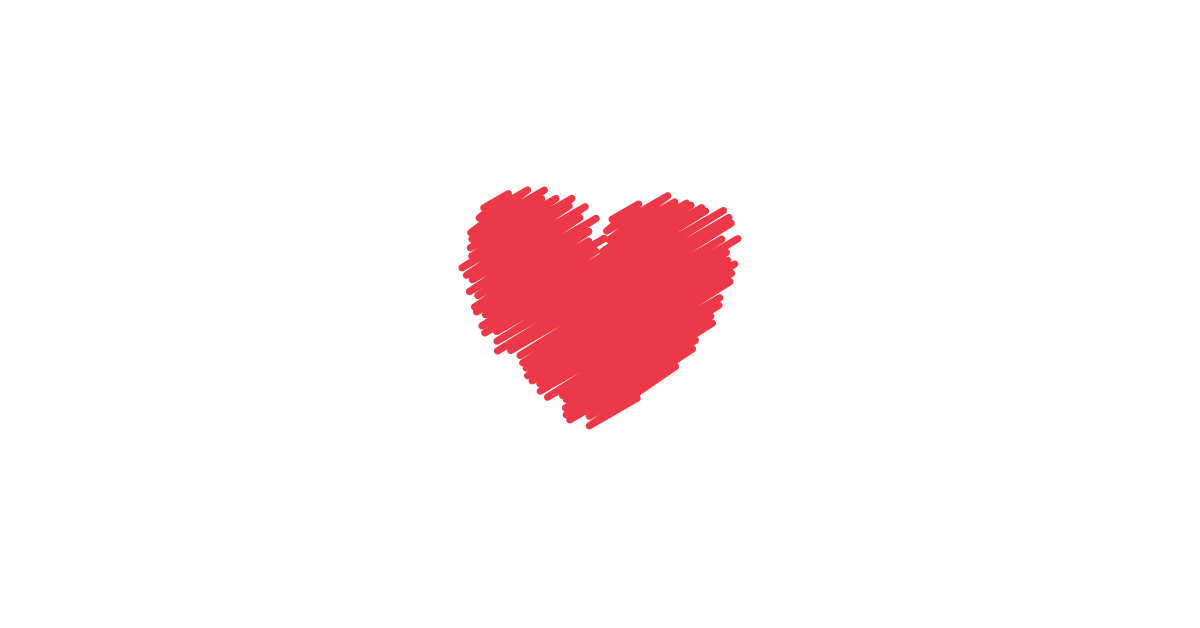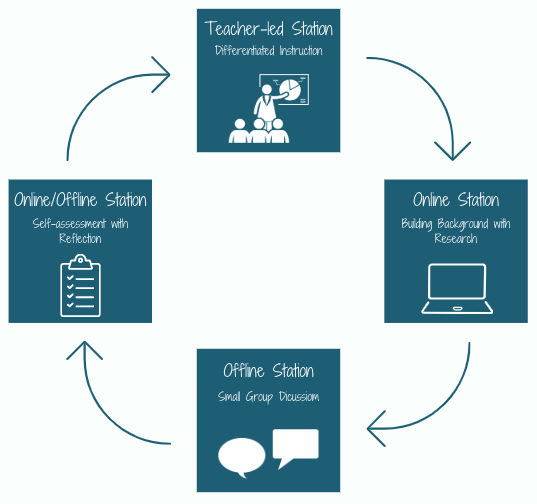How do teachers feel about their work? How dedicated or emotionally connected do they feel to their work? What factors cause teachers to feel fulfilled by this work?
Emotional engagement encompasses a teachers’ feelings about, degree of dedication to, and emotional response to their work (Perera, Vosicka, Granziera & McIlveen, 2018; Klassen, Yerdelen & Durksen, 2013). This dimension of teacher engagement is critical to understand because a teacher’s emotional engagement directly impacts their desire and willingness to invest energy into their work. It can also affect the quality of their relationships with both students and colleagues.
Two main factors can have a significant impact on a teacher’s emotional engagement at work:
- The quality of their relationships with students
- Student behaviors and classroom management
So, let’s explore some strategies for improving teacher-student relationships, laying a foundation for positive student behaviors in class, and increasing student engagement.
The Quality of a Teacher’s Relationship with Students
The quality of a teacher’s relationship with their students has the most significant impact on their emotional engagement at work (Hagenauer, Hascher & Volet, 2015; Tucker 2020). Many teachers begin the year with community-building activities designed to help students form interpersonal relationships with their peers. Teachers know that establishing and maintaining a learning community will help students feel more comfortable engaging with one another and taking risks. Yet, teachers may not actively participate in these community-building activities, which results in members of the class getting to know each other but not necessarily getting to know the teacher.
Because relationships are reciprocal, it’s essential that the students feel connected to the teacher in a classroom. One strategy I’ve used with every group of students I’ve taught is the random autobiography. The random autobiography is a free verse poem composed of lines that share random (hence the name) details about the writer’s life. I write one to share with students, so they get a sense of who I am as a person, and it serves as a model they can reference as they write their own. Below is an excerpt from my most recent random autobiography, which I shared with my graduate students.
I have a unique name that everyone pronounces wrong.
I took voice lessons for ten years, but I am terrified of singing in public.
I worked as a waitress during college at Jerry’s Famous Deli.
I am a vegetarian and love to cook.
My sister, Erin, makes me laugh.
I enjoy Mexican food and anything spicy.
I lost my uncle to AIDS when I was seven years old.
I’m wild about butterflies.
In high school, I was the lead in the musicals Little Shop of Horrors and Bye, Bye Birdie.
Schitt’s Creek, Fleabag, and The Office are my favorite TV shows.
I have backpacked through ten European countries in one month.
I am not a morning person, so I drink a lot of coffee.
I love to snowboard, but I hate being cold.
I attended the Google Teacher Academy in London.
I have been snorkeling in Thailand.
I am extremely organized.
The weather affects my moods.
I was on the varsity soccer, track, and cross-country teams in high school.
I graduated from UCLA with a degree in English Literature.
I lived in Cork, Ireland for four months with my best friend working as a barista in a coffee shop.
Students love this activity. It makes me feel more approachable and human when I share my life experiences with them. In turn, they are honest and open in their random autobiographies once I’ve shared mine with them. If you want to use this strategy with your students to get to know them better (and for them to get to know you), you can copy this assignment template that describes the activity for students.
Although the beginning of the year or the start of a new semester is a critical time to establish a class culture and begin building relationships with students, this work must extend throughout the school year. Relationships require maintenance.
In my research on teacher engagement in blended learning environments, the participants in my study credited their one-on-one and small group interactions as the most important factor in helping them to develop strong relationships with students. They talked about how challenging it was to connect with students in a traditional whole group, teacher-led lesson when they were busy ushering a group of 30+ students through a single learning experience. They credited blended learning models, like the station rotation and playlist models, with providing the time and space to work directly with learners. This helped them develop meaningful relationships with students.
The Station Rotation Model: Time to work with Small Groups of Students
Teachers using the station rotation model can work with small groups to:
- Provide differentiated direct instruction
- Lead interactive modeling sessions using prompts and problems at different levels of rigor
- Facilitate small group discussions about texts, topics, and issues
- Guide initial application and practice
- Give focused, actionable feedback on work-in-progress
The Playlist Model: Time to Work with Individual Students
Teachers using the playlist model can build teacher check-ins or conferences into the process to:
- Discuss progress toward learning goals
- Review formative assessment data with the student
- Provide additional support (e.g., personalized instruction, scaffolds, or guided practice)
- Personalize the learner’s path by adding or modifying learning activities and/or supports and scaffolds
Student Behaviors and Classroom Management
When student behaviors distract from the learning or jeopardize the safe psychological space in the classroom, it is emotionally draining for educators. Teachers can spend as much time redirecting students and addressing negative behaviors as they do facilitating learning experiences, which is frustrating.
Fears about student behavior and classroom management can also create resistance to shifting from teacher-led, whole group lessons to student-centered blended learning models. Blended learning is a fundamental shift in control over the learning experience from teacher to learner. That requires that the teacher trust that learners will behave responsibly in the learning environment, demonstrating more developed self-regulation skills.
Class Agreements
Teachers often give students a set of expectations or rules at the start of a class. However, if students did not have a voice in articulating those expectations or rules, they have no ownership over them and are less likely to follow them. Instead, teachers should engage students in the process of identifying behaviors they believe will keep the learning environment–in class and online–feeling positive, supportive, and productive.
Students have extensive experience interacting with peers in class and online, so they know what feels good and what does not. Allowing them to draw on their prior knowledge and experience to co-construct agreements about their behavior validates their experiences and gives them ownership over the process. They are more likely to comply with expectations they have had a hand in creating.
Clear Consequences
Too often, behavior issues result in power struggles between the teacher and student because there isn’t a clear sequence of consequences for missteps in class or online. If teachers work with students to create a clear path of consequences, then missteps do not need to result in power struggles. Everyone knows what the expectations for behavior are and what will happen if students choose not to follow those expectations. Like class agreements, the process of discussing and establishing consequences for behavior is best done as a learning community with students discussing appropriate consequences.
As a teacher, I worked with students to develop the following sequence of consequences for distracting or off-task behavior during a lesson.
| 1st misstep | Verbal warning |
| 2nd misstep | Relocated to work alone at a “floater desk” against the side wall with fewer distractions |
| 3rd misstep | Must complete a safe space reflection form and email or call parents/guardians to explain why they are working at the floater desk for the second time in the same 6-week grading period |
The goal is to make consequences as straightforward as possible, so students know exactly what to expect if they jeopardize the safe space. Then teachers must be consistent if they want to avoid power struggles that can damage their relationships with students.
Reflecting on Missteps
Students deal with a lot in their lives both at school and beyond. If they behave in a way that distracts from the learning environment or makes members of the learning community feel uncomfortable, they need to think about what is causing that behavior and how their behavior may be impacting other students and the teacher.
- Why did you act that way? What caused you to make that decision?
- Is there something happening in your life that is causing you to be upset, frustrated, or angry?
- How might your actions or behavior have made other students in our class feel?
- What could you have done differently? How would you handle this type of situation in the future?
- What would you like me to understand about why you acted this way?
- Is there any support you need from me to help you make a different decision in the future?
Depending on their age and preferences, students can complete a written reflection or record their thoughts in a video.
Teachers are more likely to feel emotionally engaged at work if they build strong relationships with students. This work begins at the start of the school year with community-building activities, but it must extend throughout the year. The more teachers nurture their relationships with students by designing learning experiences that allow them to connect with and support individual students and small groups of learners, the more likely they are to feel emotionally engaged at work.
School leaders interested in supporting their teachers in learning how to design and facilitate blended learning experiences to work with individuals or small groups of students can request a quote for bulk licenses of my self-paced online courses, Getting Started with Blended and Online Learning and Advancing with Blended and Online Learning! Teachers with access to my online courses enjoy video instruction, lesson planning templates, and resources designed to support them as they shift to blended learning.







5 Responses
I appreciate what you said about class agreements. As a future educator, I think it is very important to give students a voice to make sure they understand and agree.
I agree with your statement that teachers need to build strong relationships with their students so they can feel more emotionally engaged at work. Making sure my students feel safe and respected in my classroom is my number one priority, and your ideas here are ones that I can incorporate to continue that in my classroom management strategies. I think class agreements are very important, as having a voice can make a world of difference. I also love the autobiography idea at the beginning. This is something I plan to begin with my next group of students. Thank you for the wonderful ideas!
You’re welcome, Holly!
Our students are very intuitive in that they can spot a phony a mile away. If teachers do not build those relationships from the beginning, the whole year will be lost. If you build it they will come along with you on the academic journey of your content. I am convinced to this day that my success as an educator comes from my ability to connect with build relationships with my students.
As a EC teacher, I do not think students should ever be asked why did they do….. Many times students do not know why they did something. The what could be done different is a good question to ask a student.